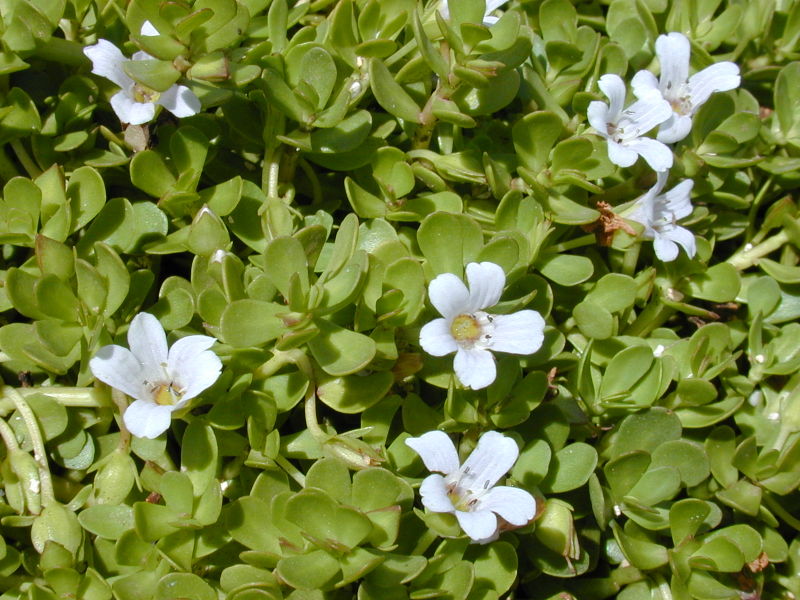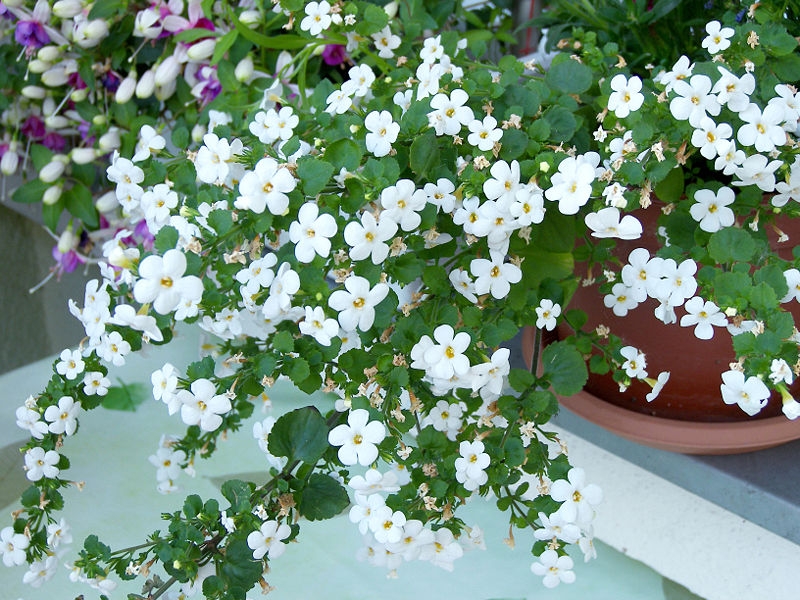BacopaThe Bacopa is a genus of 70 - 100 aquatic plants belonging to the family Plantaginaceae. Commonly known as Water Hyssop. They are annual or perennial, decumbent or erect stemmed plants. The leaves are opposite or whorled, sessile. Leaf blade regular, round to linear, venation palmate or pinnate. Stems hairy or smooth. The flowers are produced solitary or in pairs from leaf axil, usually radially symmetrical, sepals 5, petals 5, usually white, blue or purple in color. Dispersal and propagation is by seeds and stem fragments. Crushed leaves have a distinctive 'lemon' scent. B. monnieri syn. Herpestis monniera, is important in ayurvedic medicine and has been used, particularly in India, for several thousand years.It has been identified as brahmi, which is considered medhya rasayan a "brain tonic", supposedly enhancing memory development, learning, and concentration. Earlier, in Ayurvedic literature B. monnieri was identified as jal brahmi or jal neem and Centella asiatica was considered brahmi (Puri,2003). The herb shows significant psychotropic action as evidenced by excessive sleep and conformation changes in the brain as well as blood. It has anticancerous and antioxidant effect also.[1] Its many active compounds include: alkaloids (brahmine and herpestine), saponins (d-mannitol and hersaponin, acid A, and monnierin), flavonoids (luteolin and apigenin). Also in significant amounts: betulic acid, stigmastarol, beta-sitosterol, bacopasaponins (bacosides A, bacosides B, bacopaside II, bacopaside I, bacopaside X, bacopasaponin C, bacopaside N2 and the minor components were bacopasaponin F, bacopasaponin E, bacopaside N1, bacopaside III, bacopaside IV, and bacopaside V). References Botanical.com From Wikipedia, the free encyclopedias |
|

